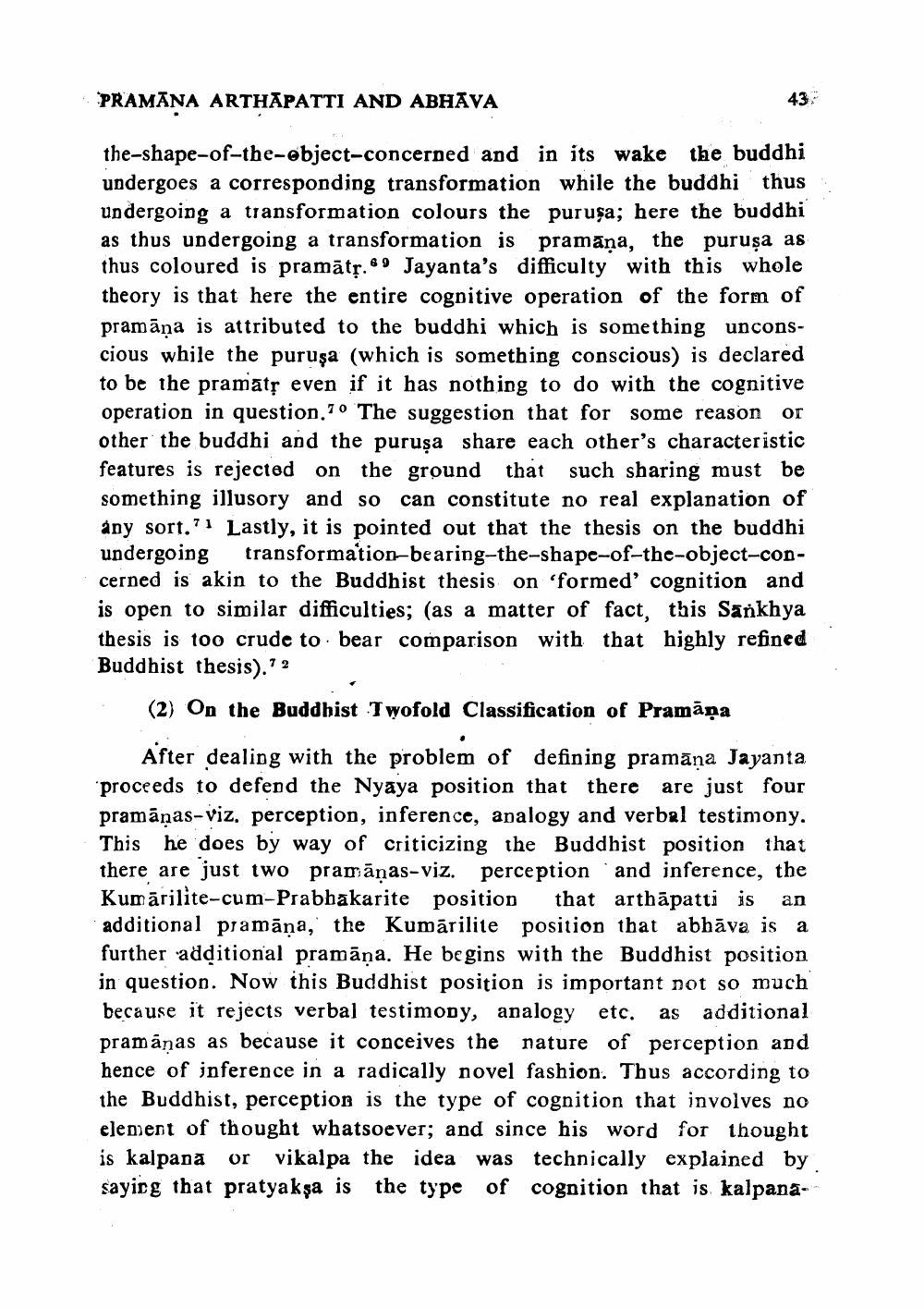________________
PRAMĀNA ARTHĀPATTI AND ABHAVA
43
the-shape-of-the-object-concerned and in its wake the buddhi undergoes a corresponding transformation while the buddhi thus undergoing a transformation colours the purusa; here the buddhi as thus undergoing a transformation is pramāna, the purusa as thus coloured is pramātr. 69 Jayanta's difficulty with this whole theory is that here the entire cognitive operation of the form of pramāna is attributed to the buddhi which is something unconscious while the purusa (which is something conscious) is declared to be the pramatr even if it has nothing to do with the cognitive operation in question.70 The suggestion that for some reason or other the buddhi and the purusa share each other's characteristic features is rejected on the ground that such sharing must be something illusory and so can constitute no real explanation of any sort.?! Lastly, it is pointed out that the thesis on the buddhi undergoing transformation-bearing-the-shape-of-the-object-concerned is akin to the Buddhist thesis on 'formed' cognition and is open to similar difficulties; (as a matter of fact, this Sankhya thesis is too crude to bear comparison with that highly refined Buddhist thesis).72
(2) On the Buddhist Twofold Classification of Pramāņa
After dealing with the problem of defining pramāņa Jayanta proceeds to defend the Nyaya position that there are just four pramāṇas-viz, perception, inference, apalogy and verbal testimony. This he does by way of criticizing the Buddhist position that there are just two pramānas-viz. perception and inference, the Kumārilite-cum-Prabhakarite position that arthāpatti is an additional pamāna, the Kumārilite position that abhāva is a further additional pramāņa. He begins with the Buddhist position in question. Now this Buddhist position is important not so much because it rejects verbal testimony, analogy etc. as additional pramānas as because it conceives the nature of perception and hence of inference in a radically novel fashion. Thus according to the Buddhist, perception is the type of cognition that involves no element of thought whatsoever; and since his word for thought is kalpana or vikalpa the idea was technically explained by saying that pratyaksa is the type of cognition that is kalpana




